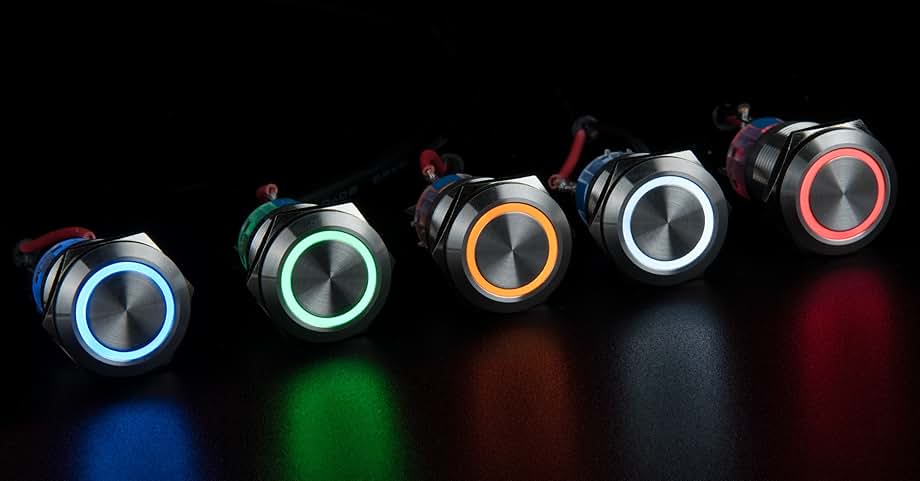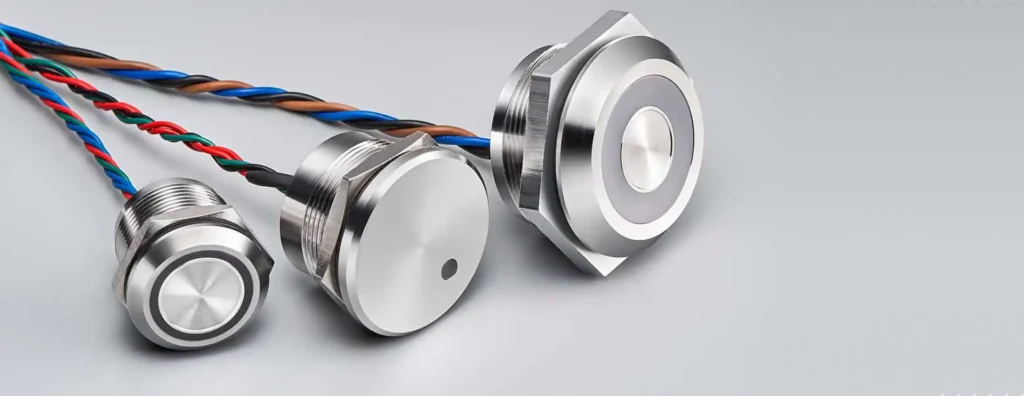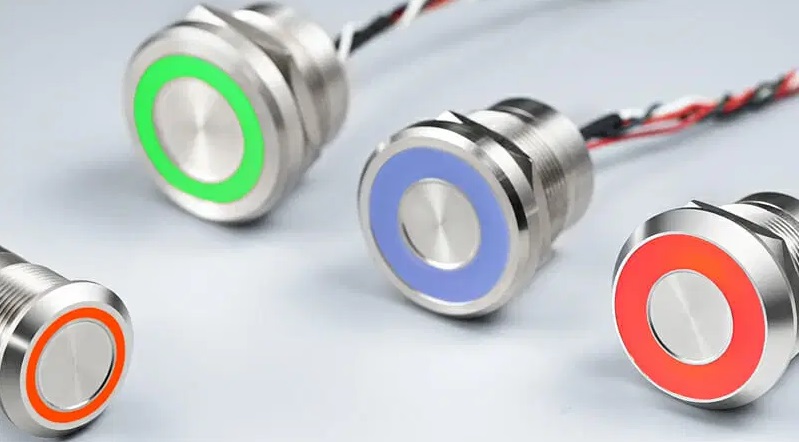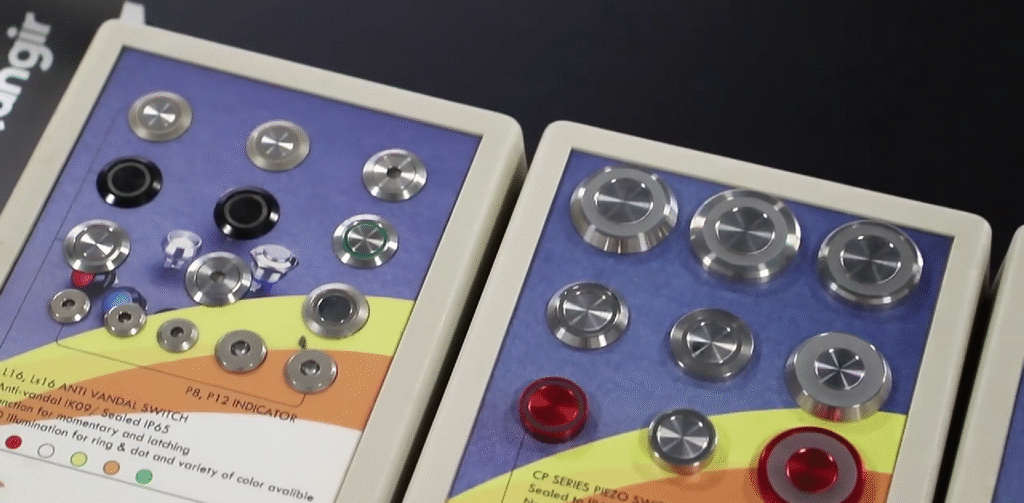産業用静電容量式タッチパネルは、電磁波や無線周波数の干渉を受けると、最大15%の確率でコマンドを誤認識し、コストのかかるダウンタイムや生産ミスにつながる可能性があります。この包括的なガイドでは、静電容量式タッチシステムのEMIノイズを低減するための実践的な戦略について、基本原理、堅牢なハードウェアとソフトウェアの防御、スマートな設計手法、堅牢な押しボタンスイッチとのシームレスな統合などを掘り下げて解説します。以下のような見識を得ることができます:
- EMIとRFIの性質とタッチセンシングへの破壊的影響
- 効果的なハードウェア・シールド、接地、フィルタリング、PCB設計の戦術
- ノイズキャンセルや周波数ホッピングなどの洗練されたソフトウェア・アルゴリズム
- 最適な材料の選択、オーバーレイの考慮、スイッチの統合戦略
- Langirの産業用押しボタンスイッチがEMI/RFI耐性を大幅に向上させる理由
- 段階的な実施ガイダンスと不可欠な長期モニタリングの実践
ノイズ免疫に優れた静電容量式センシング機能を産業用制御機器に装備し、個別のソリューションや大量注文をご検討の際は、専用のお問い合わせページをご利用ください。
EMIとRFIを理解する:静電容量式タッチ・センシングの妨害要因
電磁干渉(EMI)と無線周波数干渉(RFI)は、センサーの電界に侵入して信号の完全性を低下させることにより、静電容量式タッチセンシングを損なう好ましくないエネルギー形態です。これらの干渉のニュアンスを把握することは、要求の厳しい産業環境で効果的な緩和策を実施するために最も重要です。
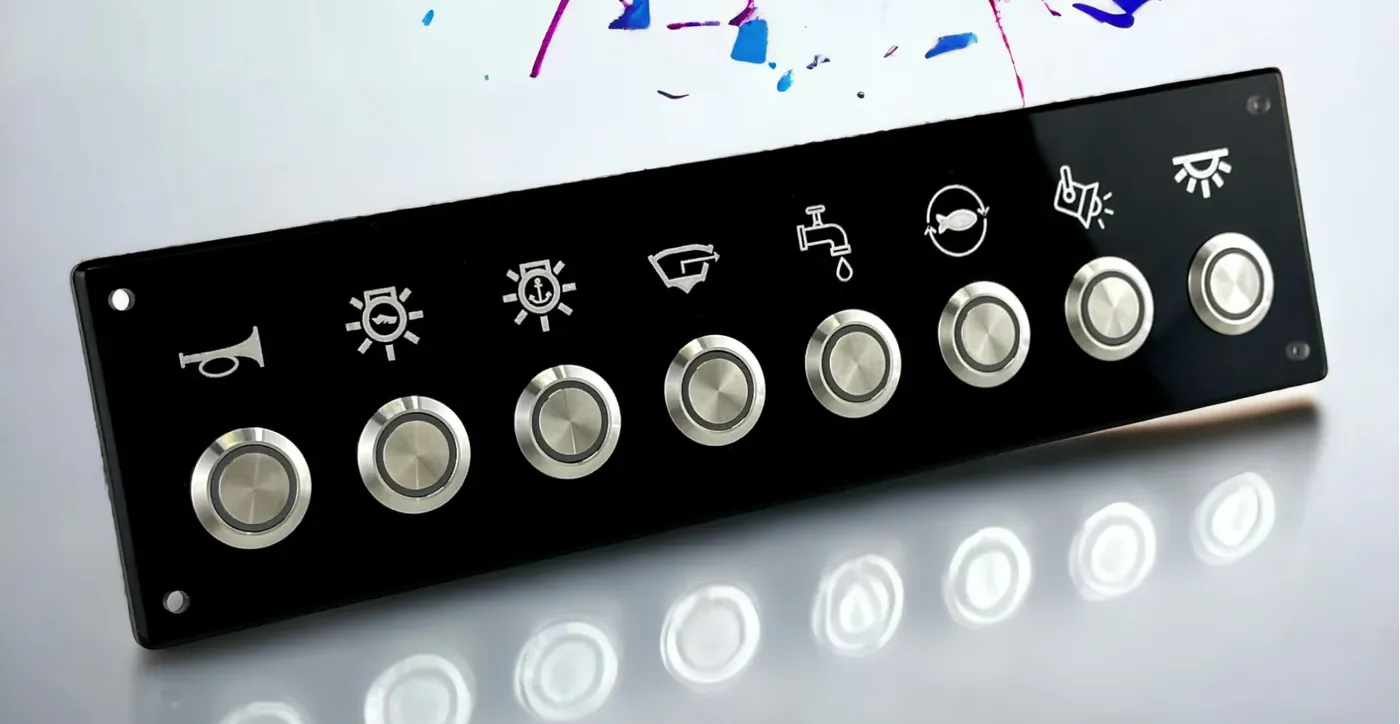
産業分野におけるEMI/RFIの解読
電磁干渉 (EMI) や無線周波数干渉 (RFI) は、センサーの電界に外来エネルギーを導入することで静電容量式タッチセンシングを著しく妨害し、信号品質を低下させ、産業用アプリケーションで誤作動を引き起こす可能性があります。このような障害は、不正確な読み取りや動作不良を引き起こす可能性があります。
スミス, A., "産業用電子機器におけるEMI/RFIの緩和技術," Journal of Industrial Engineering (2022)
この基礎研究は、静電容量式タッチ・センシングにおけるEMI/RFIの影響を明らかにし、強固な緩和戦略を開発するための重要な背景を提供します。
産業現場における電磁干渉(EMI)とは?
電磁干渉とは、電気機器から発生する迷走電磁エネルギーのことで、近くの回路に破壊的なノイズ電流を誘導し、タッチ感度を低下させたり、意図しないアクティベーションを引き起こしたりします。工場環境では、溶接機、高圧送電線、大型モーターなどから広範な EMI が発生し、タッチコントローラーや関連ケーブルに影響を及ぼします。センサーの精度を維持し、誤った読み取りを防ぐには、EMI を発生源から軽減することが重要です。
無線周波数干渉(RFI)は一般的なEMIとどう違うのか?
無線周波干渉はEMIの一種で、一般的に3 kHz~300 GHzの周波数帯域に限定され、無線通信機器、レーダーシステム、放送送信機からよく放射されます。EMIはすべての周波数を含みますが、RFIの集中帯域はタッチセンサー電子機器と共振し、顕著な信号スパイクや歪みを引き起こします。正確に調整されたフィルターと適応周波数調整によってRFIに対処することは、センシング性能への影響を最小限に抑えるために極めて重要です。
静電容量式タッチセンサーに影響を与える一般的なEMI/RFI発生源の特定
産業施設には、静電容量式センシング・システムの性能を損なうEMI/RFIエミッターが数多く存在します:
- 急激なスイッチング電流により広帯域ノイズを発生するモーターおよび可変周波数ドライブ
- 著しい高周波高調波を発生するインバータおよび電力変換器
- Wi-Fiホットスポットやブルートゥースモジュールなど、重要なRFI帯域で放送している無線機器
- 配電線に伝導ノイズを注入する変圧器とスイッチ・モード電源装置
これらのソースは伝導妨害と放射妨害の両方を引き起こすため、包括的な保護のためには多層防御戦略が必要となる。
EMI/RFIが静電容量式タッチ性能に与える影響
EMIとRFIは、電極ネットワークにスプリアス電荷を注入することで静電容量式センシング能力を低下させ、ファントム・タッチ、無反応、S/N比の低下を招きます。センサーは、干渉スパイクを本物の指の近接と誤って解釈したり、ノイズによって不明瞭になった有効なタッチを登録できなかったりすることがあります。信頼性の高いヒューマンマシンインタラクションを維持し、コストのかかる生産エラーを防ぐには、堅牢なイミュニティを確保することが不可欠です。
静電容量式タッチ・センシングを妨げるノイズの種類
静電容量式タッチ回路は、伝導ノイズと放射ノイズの2つの経路でノイズの影響を受けます。それぞれのタイプを理解することは、的を絞った対策を実施するために不可欠です:
伝導ノイズは電源ラインや基準ラインに沿って伝わり、信号ドリフトを引き起こし、放射ノイズはセンサーの筐体やPCBトレースを貫通します。包括的なイミュニティを達成するためには、両方の経路に対処することが重要です。
静電容量式タッチ・システムにおけるEMI/RFIを軽減する効果的なハードウェア・ベースの技術
ハードウェアベースの防御は、干渉がセンサーのフロントエンド回路に到達する前に物理的にブロック、シャント、または減衰させることで、保護の第一層として機能します。綿密なシールド、接地、フィルタリング、および適切なPCB設計を実施することで、ノイズ除去能力は劇的に向上します。
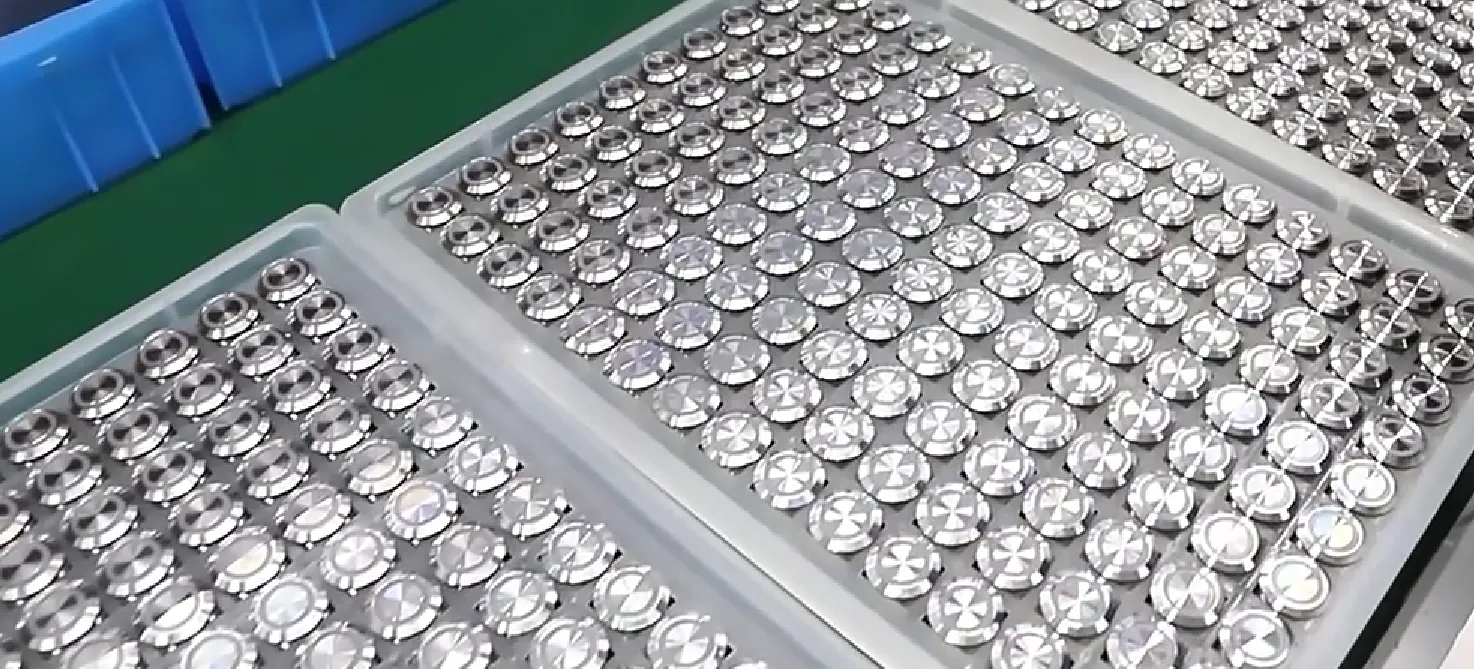
ハードウェアベースのEMI/RFI軽減戦略
静電容量式タッチセンサーを EMI/RFI から保護するには、シールド、接地、フィルタリングといったハードウェアベースの技術が不可欠です。効果的なシールドには、干渉を反射または吸収する導電性バリアの配置が含まれ、適切な接地はノイズ電流の低インピーダンス経路を確立します。フィルタリングは、不要な周波数成分がタッチ検出を妨害する前に減衰させる役割を果たします。
Johnson, B., "Design and Implementation of EMI/RFI Shielding in Electronic Systems," IEEE Transactions on Electromagnetic Compatibility (2021)
この研究は、EMI/RFI緩和におけるハードウェア・ベース・ソリューションの重要な役割を強調するものであり、この記事がこれらの重要な技術に焦点を当てていることを補強するものである。
電磁シールドが静電容量式タッチセンサーを保護する方法
電磁シールドは、EMI/RFIを反射または吸収するように設計された導電性バリア内に高感度タッチ素子を包むことで、電磁界がセンサー電極に結合するのを防ぎます。銅メッシュ、アルミフィルム、導電性コーティングなどの素材をエンクロージャーやオーバーレイ層に加工することで、干渉を効果的にブロックすることができます。適切に接地された連続シールドは、浮遊磁界がデリケートなタッチ回路から効率的に逸れることを保証します。
EMI軽減における堅牢なアースとボンディングのベストプラクティス
入念に実装されたグランド・トポロジーは、ノイズ電流が安全にソースに戻るための低インピーダンスの経路を提供し、グランド・ループや電圧差を効果的に防止します。すべてのシャーシと回路のグランドが1点に集まるスター接地を採用し、PCB上の専用グランドプレーンを利用することで、強固なリターン経路を作り出します。導電性の筐体部品をアースグランドに結合することで、敏感なセンサーエリアから放射電界を遠ざけることができます。
フィルタリングによる静電容量式タッチ回路のEMI/RFIイミュニティの改善
フィルタリング技術は、タッチ検出を妨害する前に不要な周波数成分を減衰させるために採用されます。コモンモードチョークやπフィルターを含む電源ラインフィルターは、入力される電源ノイズを除去するために重要であり、信号ラインに戦略的に配置されたフェライトビーズは高周波干渉を効果的にブロックします。フィルターのカットオフ周波数をセンサーの動作帯域幅のすぐ上に選択することで、EMIピークを効果的に除去しながら応答性を維持することができます。
EMI/RFI干渉を最小化するPCB設計戦略
PCBレイアウトの最適化は、ノイズを増幅させる電磁結合や共振を最小限に抑えるための基本です。主な戦略は以下の通りです:
- タッチ電極の真下に連続グランドプレーンを配置し、効果的なシールドを実現
- センサートレースから安全な距離で、高速トレースやノイズの可能性のあるトレースをルーティングする。
- コモンモード・ノイズ除去を強化するため、センサー信号に差動ペア・ルーティングを採用
- 電圧レールを安定化させるため、電源ピン付近にデカップリングコンデンサを戦略的に配置
これらのレイアウト対策を組み合わせることで、EMI/RFIの課題に耐える強靭なハードウェア基盤が確立される。
静電容量式タッチ・センシングのノイズ耐性を高めるソフトウェアとファームウェア・ソリューションの活用
物理的な防御にとどまらず、ファームウェアに組み込まれたインテリジェントなアルゴリズムは、本物のタッチを一過性の干渉から効果的に区別することができる。
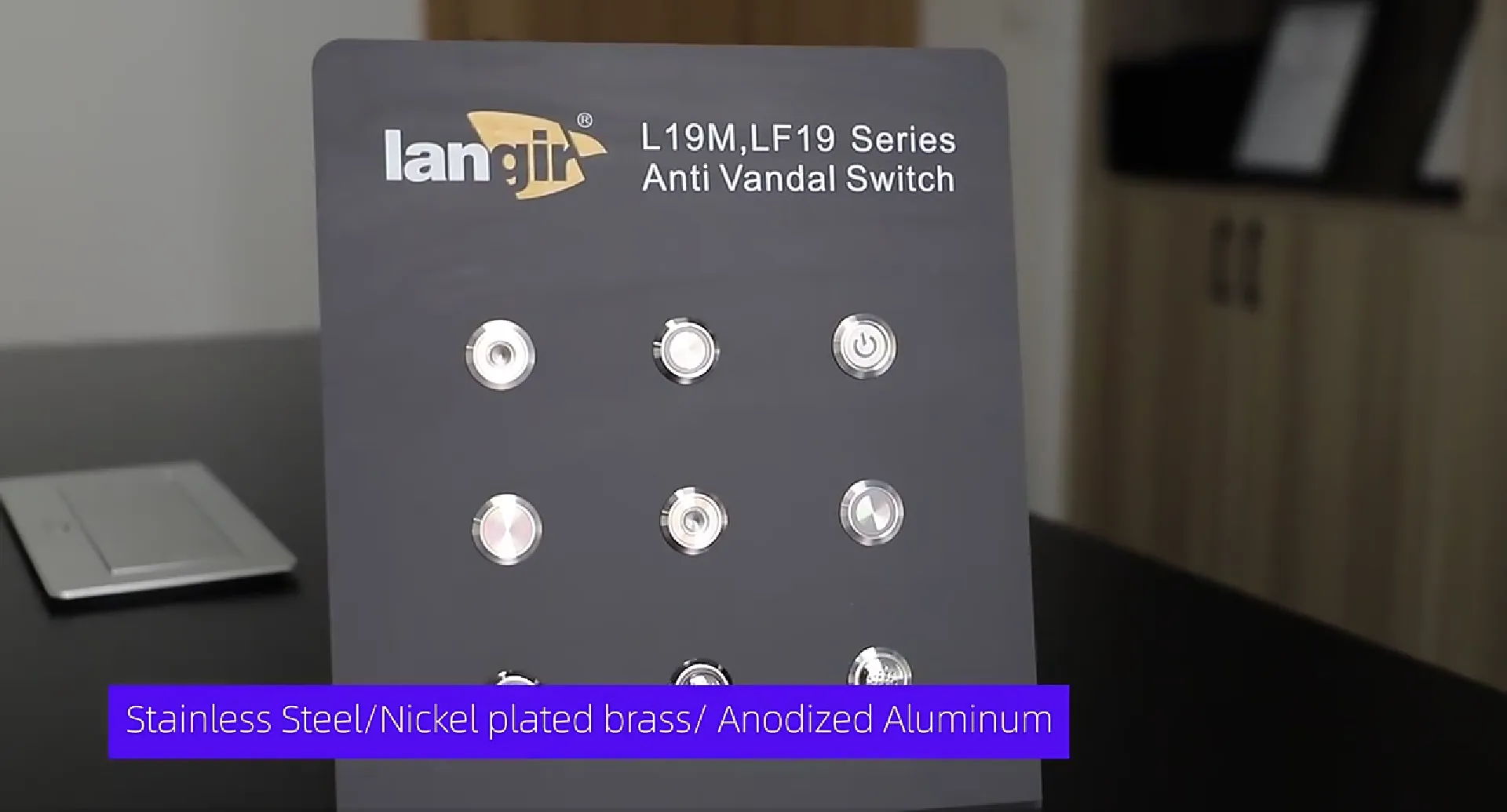
ノイズ耐性強化のためのソフトウェアおよびファームウェア・ソリューション
洗練されたノイズキャンセリングアルゴリズムやダイナミック周波数調整技術を含むソフトウェアとファームウェアのソリューションは、静電容量式タッチセンシングシステムのノイズ耐性を高める上で重要な役割を果たします。ノイズキャンセリングアルゴリズムは過渡的な干渉を抑制することに長けており、ダイナミック周波数調整により、システムは干渉のホットスポットを積極的に回避することができます。これらの方法を組み合わせることで、ダイナミックで厳しい電磁環境においてもタッチ精度を維持することができます。
デイビス、C.「静電容量式タッチセンサーの高度信号処理技術」、センサーズ・ジャーナル(2023年)
この研究は、ノイズ耐性向上におけるソフトウェアとファームウェアの重要な役割を強調し、これらの強力なソリューションに関する記事の詳細な議論を補完するものである。
ノイズキャンセリングアルゴリズムがEMI/RFIの影響を抑制する仕組み
ノイズ・キャンセレーションは、洗練された時間的・空間的フィルタリング技術を採用し、過渡的な干渉を効果的に抑制します。スルーレートリミッターは入力信号の急激な変化を抑制し、移動平均フィルターはセンサーの読み取り値を時間と共に滑らかにします。空間フィルターは、隣接する電極からのデータを分析し、広範囲なノイズスパイクを除去します。これらのアルゴリズムが相乗的に作用し、ダイナミックなEMI/RFI条件下でも正確なタッチ精度を維持します。
ダイナミック周波数調整と周波数ホッピングを理解する
ダイナミック周波数調整では、干渉のホットスポットを戦略的に回避するために、複数の帯域にわたってセンサーの駆動周波数をスキャンします。周波数ホッピング・ファームウェアは、ノイズしきい値を超えるたびに検出周波数を動的にシフトし、問題となるRFI帯域を効果的に「回避」します。この適応的アプローチにより、電磁干渉が変動する環境においても、一貫した感度と信頼性の高い性能が保証されます。
差動センシングによる同相ノイズ除去の改善
ディファレンシャル・センシングは、絶対的なキャパシタンスの読み取りに頼るのではなく、対になった電極間の電圧差を測定することで動作します。この固有の設計は、両方の信号線に共通するノイズを効果的に打ち消します。差動信号を処理することで、ファームウェアは均一な干渉(コモンモードノイズ)を正確に識別することができ、同時に本物のタッチイベントを増幅することができます。
産業用EMI/RFI環境向けの堅牢な静電容量式タッチ・インターフェースの設計
耐EMI静電容量式タッチパネルに最適なセンサー材料
適切なセンサー材料を選択することが、固有のEMI耐性を高める鍵となる。好ましい選択には以下が含まれる:
- ITO(酸化インジウムスズ):電極に透明性と適度なシールド機能を提供。
- 金属メッシュ:優れた導電性と効果的な高周波減衰を提供。
- 導電性インク:フレキシブル基板に最適で、電極パターンのカスタマイズが可能。
オーバーレイの厚さと材質がEMIイミュニティに及ぼす影響
オーバーレイ素材の厚さは、ユーザーの指とその下の電極との間の容量性カップリングに大きく影響します。ポリカーボネートなどの高誘電性ポリマーで作られたオーバーレイを厚くすると、センサーのベースライン静電容量が増加し、ノイズの影響を受けにくくなります。しかし、過度に厚いオーバーレイはタッチの応答性を低下させる可能性がある。材料の誘電率と厚さの最適なバランスを達成することは、イミュニティと性能の両方を最大化するために非常に重要です。
静電容量式タッチセンサーと工業用押しボタンスイッチの統合
静電容量式センサーを従来の機械式押しボタンスイッチと組み合わせることで、貴重なデュアルモード入力の冗長性が得られます。密閉されたアクチュエーターハウジングの周囲に静電容量電極を埋め込むことで、EMIや物理的摩耗によってスイッチの機械的経路が損なわれても、タッチ操作が可能になります。このハイブリッド・インターフェースにより、オペレータは極度の電磁ストレス下でも、堅牢なスイッチ・メカニズムによる本質的な制御を維持することができます。
Langirの産業用押しボタンスイッチがEMI/RFIイミューンの静電容量式タッチシステムをどのように強化するか
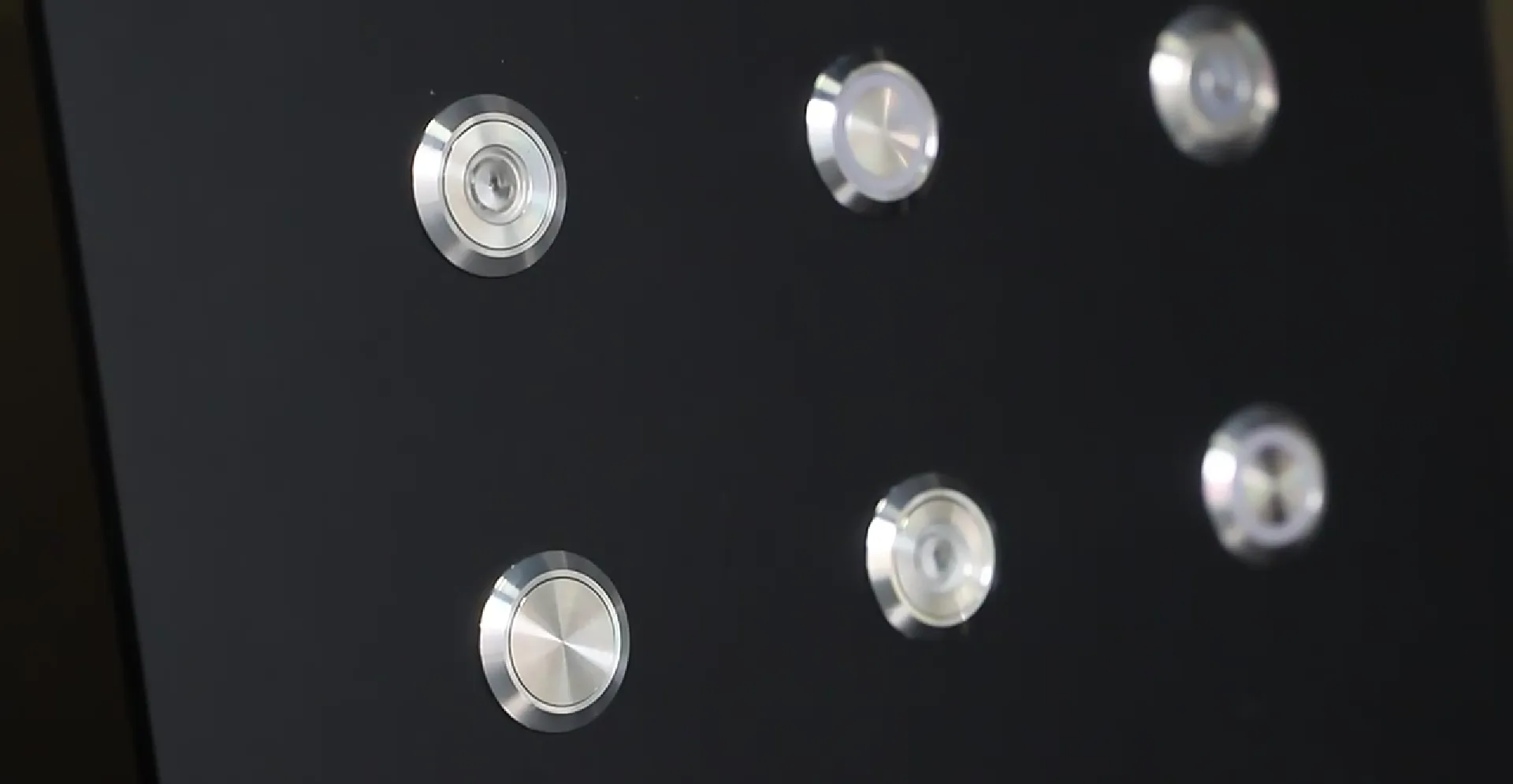
高EMI/RFI環境に最適なLangirスイッチの特長
Langirスイッチは、頑丈な構造、精密なシーリング、オプションのEMIシールドインサートにより、浮遊電磁界を効果的に遮断し、安定した作動を保証します。主な特徴は以下の通りです:
- 高いIP等級:埃や水分の侵入に対して優れた保護を提供します。
- ステンレス・スチール製ハウジング:アース用途に最適な導電性シャーシを提供。
- EMIシールドキャップ(オプション:外部干渉からアクチュエータ機構を保護するために設計されています。
ランギルスイッチのEMI/RFI耐性を強化するカスタマイズオプション
Langirは、特殊なシールド合金や統合フィルタリング部品を含むオーダーメードのソリューションを提供し、特定のEMI/RFIプロファイルに正確に適合したスイッチ設計を可能にします。お客様との共同研究開発を通じて、独自の干渉源を特定し、内部RF吸収体やカスタムグランドボンディングストラップなどの特注の緩和機能を統合することで、特殊な産業環境におけるスイッチのイミュニティを向上させます。
厳しいEMI/RFIシナリオにおけるランジール・スイッチの実世界でのアプリケーション
要求の厳しい自動車組立ラインでは、強化シールドインサートを装備したLangirスイッチが、高出力のスポット溶接機器に近接していても、信頼性の高いオペレータ入力を一貫して維持します。通信ラックでは、カスタマイズされたRF吸収スイッチキャップが、近くの5Gアンテナによるボタンのチャタリングを効果的に防止します。これらの成功事例は、スイッチ固有の回復力と幅広い干渉源への適応性を浮き彫りにしています。
産業用静電容量式タッチシステムにおけるEMI/RFI軽減のベストプラクティス
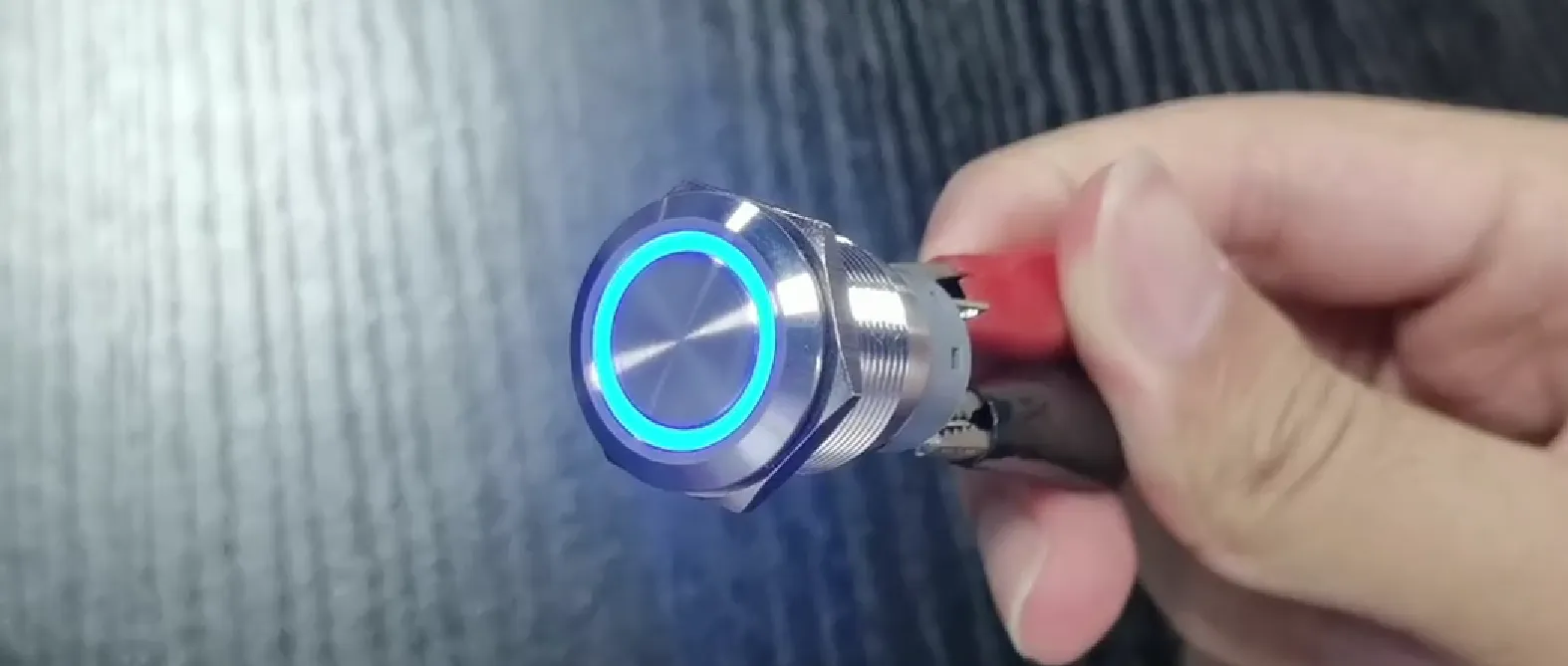
最適なノイズ除去のためのハードウェアとソフトウェアの組み合わせ
- シールドとアース:干渉源を遮断し、迂回させるための強固な物理的バリアを導入する。
- フィルタリング:電源ラインや信号ラインに残留するノイズを減衰させるために、効果的なフィルタを使用する。
- ファームウェア・アルゴリズム:高度なアルゴリズムにより、一過性のノイズスパイクを抑制。
EMI/RFIコンプライアンスを保証する試験および検証方法
IEC 61000-4シリーズのような確立されたEMC規格への準拠を保証するには、厳格な試験プロトコルが必要です:
- 放射イミュニティ試験:掃引周波数電磁界を機器に与え、性能を評価する。
- イミュニティ・テストの実施:システムの耐障害性を評価するために、制御されたノイズを電源ラインや信号ラインに注入する。
- 機能テスト:様々な干渉レベル下でのタッチ精度と応答性を検証。
実験室と現場での検証手順の両方で、センサーとスイッチが一貫して厳しい性能しきい値を満たしていることが確認されている。
EMI/RFIイミュニティの長期維持とモニタリング
システムの完全性を維持するための継続的な戦略には、以下のようなものがある:
- 代表的な干渉条件下での定期的な再確認試験。
- 内蔵診断ツールによるS/N比の継続的モニタリング。
- シールドの完全性、アース接続、オーバーレイの摩耗の定期検査。
長期的な信頼性を維持し、潜在的な劣化が運転性能に影響を及ぼす前に検出するためには、こうしたプロアクティブな実践が不可欠である。
静電容量式タッチ・センシングにおけるEMI/RFI干渉に関するよくある質問
タッチシステムを評価するエンジニアは、干渉源、保護方法、効果的な設計戦略に関する共通の懸念事項に頻繁に遭遇します。EMI低減技術、発生源の特定、シールドのベストプラクティス、RFI緩和アプローチ、ノイズ免疫センサーの設計などが主な対象です。
産業用静電容量式タッチスクリーンのEMIを効果的に低減するには?
EMIの低減には、シャーシにしっかりと接地された導電性エンクロージャーの利用、電源ラインと信号ラインへのフェライトベースのフィルターの組み込み、スルーレート制限などのソフトウェアフィルターの採用といった、重層的な防御戦略の実行が必要です。各技術は、伝搬の異なる段階でノイズをターゲットにすることで、重要なタッチ精度を維持します。
静電容量式タッチセンサーにおけるEMIの主な原因とは?
EMIの一般的な発生源には、ハイパワーモーター、スイッチング電源、RFトランスミッター、誘導加熱システムなどがあります。これらのデバイスは、容量性または誘導性の経路を通じてセンサー回路に結合する可能性のある広範なエネルギーを放出し、正常な動作を妨害します。
静電容量式タッチセンサーに効果的なシールドとは?
効果的なシールドには、電極を包む連続的な導電層を使用し、複数の点で確実に接地することが必要です。銅メッシュ、アルミ箔、特殊な導電性コーティングのような材料は、不要な電磁場がセンサーの敏感な部品に到達する前に吸収または反射するのに非常に効果的です。
RFI緩和とは何か、なぜ重要なのか?
RFIの緩和は、同調フィルター、動的周波数ホッピング技術、特殊な吸収材を戦略的に使用することにより、無線周波数帯域に対処することに重点を置いている。RFIは、標準的なEMI保護対策では十分に対処できない持続的な狭帯域ノイズを発生させる可能性があるため、極めて重要です。
静電容量式センサーをノイズ耐性にするには?
静電容量式センサーでノイズ・イミュニティを達成するには、シールド、接地、フィルタリングなどの堅牢なハードウェア・バリアの実装と、時間/空間フィルタリングや差動センシングなどの洗練されたファームウェア戦略の組み合わせという、デュアル・モードのアプローチが必要です。この包括的な設計手法は、過渡的なスパイクと連続的な干渉の両方を効果的に除去し、信頼性の高い動作を保証します。
要求の厳しい産業環境で信頼性の高い静電容量式タッチ操作を保証するには、シールド、接地、フィルタリング、高度なファームウェアアルゴリズム、慎重な材料選択、弾力性のあるスイッチ設計を総合的に統合する必要があります。Langirのカスタム設計、一括注文の押しボタンスイッチに関する専門知識は、静電容量式インターフェースを完璧に補完し、最も厳しいEMI/RFI条件に耐えうるユーザーコントロールを提供します。電磁干渉に対するシステムのパフォーマンスを強化する準備はできていますか?当社の 連絡先 - Langir のページで、大量注文のご相談やEMI免疫スイッチ・ソリューションのご相談を承ります。
 EN
EN


 28/09/2025
28/09/2025